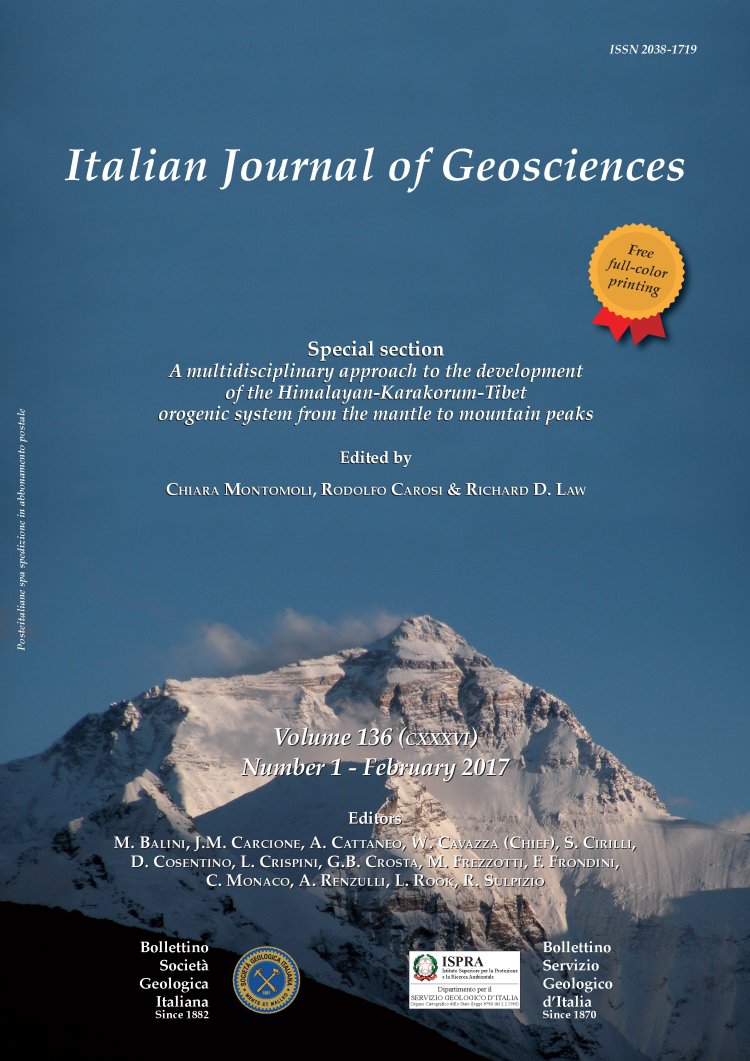
Northern provenance of the Gondwana Formation in the Lesser Himalayan Sequence: constraints from 40Ar/39Ar dating of detrital muscovite in Darjeeling-Sikkim Himalaya
Djordje Grujic (*), Isabelle Coutand (*), Michael Doon (*) & Dawn A. Kellett (*,**)
(*) Department of Earth Sciences, Dalhousie University, 1459 Oxford street, Halifax, B3H 4R2, Canada. Corresponding author e-mail: dgrujic@dal.ca.
(**) Geological Survey of Canada, Central Canada Division, Natural Resources Canada, 601 Booth St., Ottawa, Canada.
Volume: 136 (2017) f.1
Pages: 15-27
Abstract
Single-grain 40Ar/39Ar dates are reported for detrital white mica from low-grade meta-arkose samples from the Gondwana Formation in the Darjeeling-Sikkim Himalaya. The majority (61%) of single grains from five samples yielded dates of ~480 Ma. The remaining grains yielded dates between ~590 and 1700 Ma, and a few grains were younger than 480 Ma. These data suggest that the source of the Gondwana sedimentary rocks in the Himalaya lay to the north, in contrast to the previously held view that it was in the south. This also indicates that the Cambro-Ordovician granites, extensively present in the Himalayan metamorphic core, the Greater Himalayan Sequence, were exposed at the surface in the Permian in a mountain range to the north of the Permian continental rifts. Preservation of the original muscovite ages and the absence of evidence of a thermal overprint during the Himalayan orogenesis indicate that the burial temperatures of the Gondwanan sedimentary rocks, located at the base of the Lesser Himalayan Sequence, did not exceed 400 °C.
Keywords
Himalaya, 40Ar/39Ar dating of muscovite, Gondwana Formation, Lesser Himalayan Sequence, provenance analysis.
Get Full Text Attached